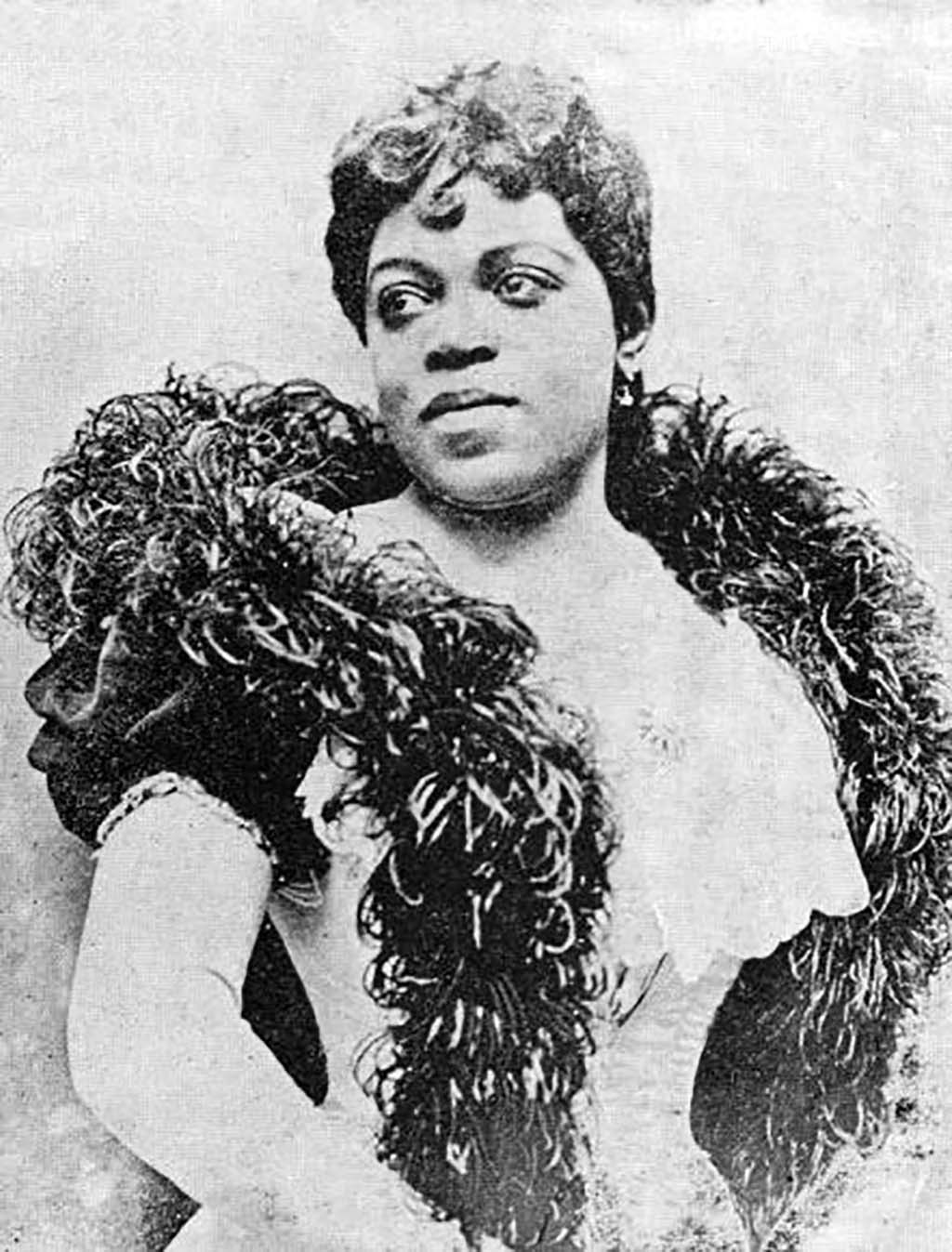Sissieretta Jones was a world-famous soprano who in June 1892 became the first African American to perform at Carnegie Hall in New York City, New York. Touring internationally in the late 1800s and early 1900s, she sang both classical opera and performed in musical comedies with her own troupe.
Born Matilda Sissieretta Joyner on January 5, 1869, in Portsmouth, Virginia, she was the child of Jeremiah Joyner, a pastor, and Henrietta Joyner, a singer in the church choir. After moving with her family to Rhode Island when she was six, Sissieretta began singing in the church choir, which was directed by her father. When only fourteen, she married David Richard Jones, who became her first manager. Later, she formally studied voice at the Providence Academy of Music, the New England Conservatory, and the Boston (Massachusetts) Conservatory.
Following her New York City debut on April 5, 1888 in Steinway Hall, she was nicknamed “the Black Patti” after being compared to the Italian prima donna Adelina Patti, well-known at the time. The nickname stayed with her throughout her 30-plus year career, although she preferred to be called Madame Jones. During the 1880s and 1890s, Jones performed at Madison Square Garden, Boston’s Music Hall and the World’s Columbian Exposition in Chicago, Illinois. She first performed at the White House in February 1892 for President Benjamin Harrison and returned to appear before Presidents Grover Cleveland, William McKinley, and Theodore Roosevelt. She also appeared before the British Royal Family. Jones’s international tours took her to the Caribbean, South America, Australia, India and Southern Africa as well as London, Paris (France), Berlin (Germany), Milan, Munich, and St. Petersburg (Russia). By 1895 Jones had become the most well known and highly paid African American performer of her day.
In the 1890s, she formed Black Patti’s Troubadours, taking advantage of the popularity of black musical comedies, originally called “coon shows.” Jones sang opera selections and spirituals at the end of the show, rather than closing with the typical cakewalk. The group was one of the most popular shows on American stage, touring throughout the United States; the careers of numerous black performers were launched by their initial appearances with the Black Patti troupe.
African Americans began to see the black musical comedies as reflecting negatively on their race, and the group’s tours wound down, with a 1915 last performance at New York City’s Lafayette Theater. Jones moved back to Providence, Rhode Island and cared for her mother and her two adopted children. Her husband’s gambling and lavish misuse of their money had led Jones to divorce him in 1899. In spite of her many years of high earnings, toward the end of her life Jones needed to rely on financial assistance from the National Association for the Advancement of Colored People (NAACP). Sissieretta Jones died of cancer on June 24, 1933 at the Rhode Island Hospital in Providence, Rhode Island.

